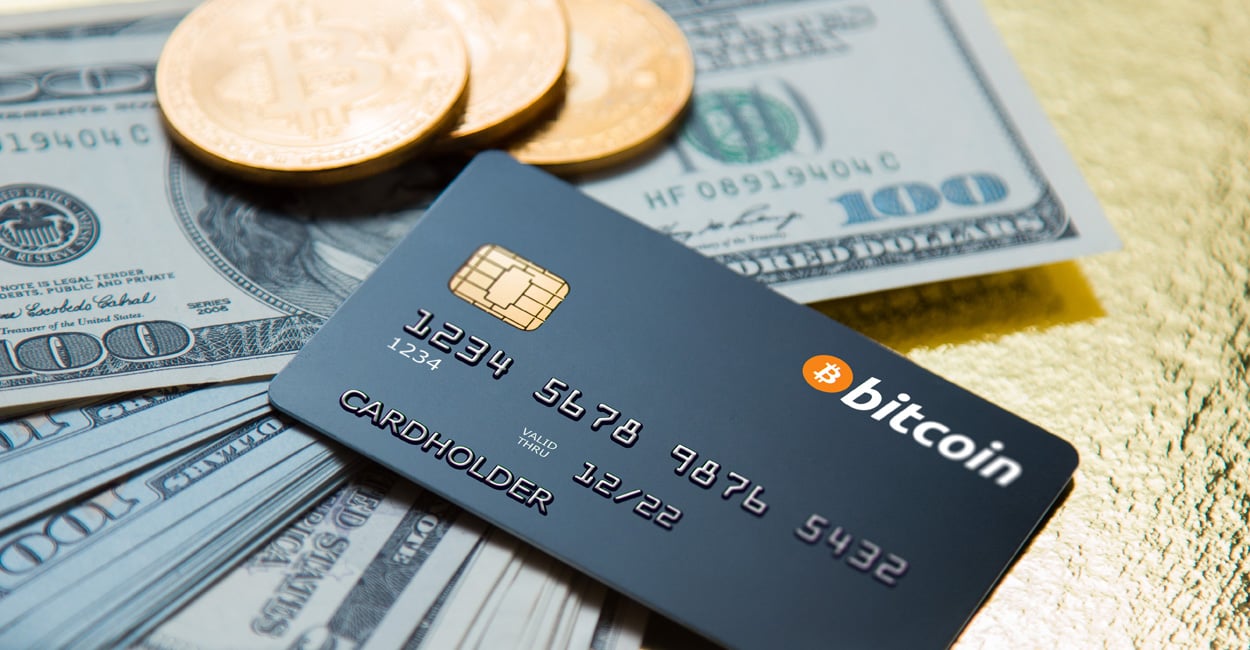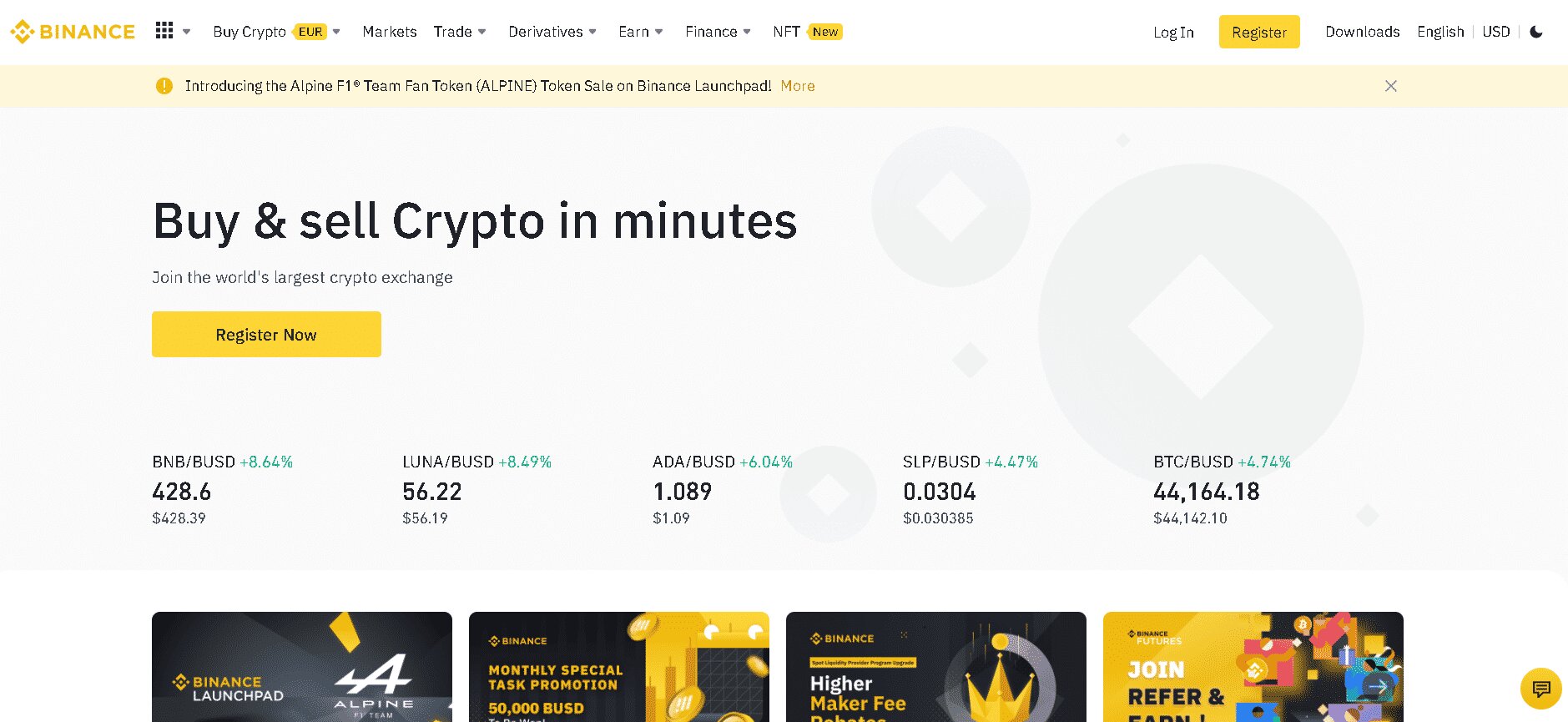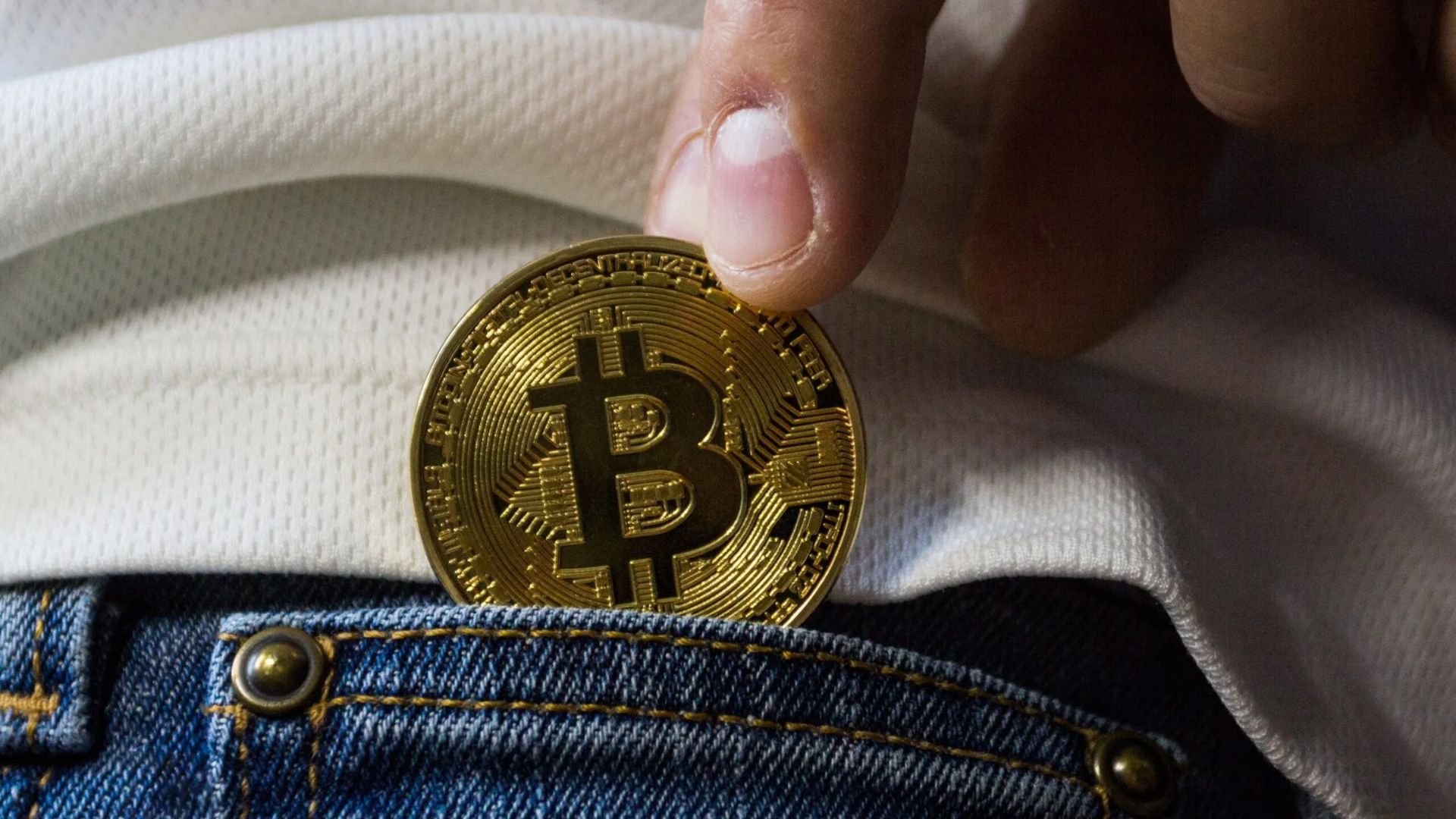Introduction
Welcome to the world of cryptocurrencies! If you are wondering where you can buy cryptocurrency, you have come to the right place. Cryptocurrencies, such as Bitcoin, Ethereum, and Litecoin, have gained tremendous popularity in recent years. These digital currencies offer a decentralized and secure way to transfer value across the internet.
But before we dive into the various options for purchasing cryptocurrencies, let’s understand why you should consider investing in them.
Cryptocurrencies have the potential for high returns on investment. In fact, many early adopters of Bitcoin have become millionaires as the value of their holdings skyrocketed. Additionally, cryptocurrencies provide an alternative form of investing and diversification, especially in uncertain economic times.
Another reason to buy cryptocurrencies is the convenience they offer. Unlike traditional banking systems, which often involve lengthy processes and high fees for cross-border transactions, cryptocurrencies enable quick and cost-effective international transfers.
Furthermore, cryptocurrencies operate on a technology called blockchain, which ensures transparency and security. With blockchain, all transactions are recorded and verified by a decentralized network of computers, making it nearly impossible for hackers to tamper with the data.
Now that we understand the value of cryptocurrencies, let’s explore the different avenues where you can buy them.
Why Should You Buy Cryptocurrency?
There are several compelling reasons why you should consider buying cryptocurrency. Let’s delve into some of the key benefits:
1. Potential for High Returns: Cryptocurrencies have gained a reputation for delivering significant returns on investment. Bitcoin, for example, experienced a meteoric rise in value over the past decade, attracting the attention of investors worldwide. By investing in cryptocurrencies, you have the opportunity to capitalize on this potential for substantial profits.
2. Diversification: Including cryptocurrencies in your investment portfolio allows for diversification. By diversifying your investments across different asset classes, you reduce the risk associated with having all your eggs in one basket. Cryptocurrencies offer a unique form of investment that operates independently from traditional financial markets, thereby providing an additional layer of diversification.
3. Global Accessibility: One of the key advantages of cryptocurrencies is their global accessibility. Unlike traditional financial systems that may have restrictions or limitations, anyone with an internet connection can buy and trade cryptocurrencies. This inclusivity breaks down barriers and empowers individuals from all corners of the globe to participate in the cryptocurrency market.
4. Speed and Security: Cryptocurrency transactions are processed at a rapid pace compared to traditional financial systems. Whether you are sending or receiving funds, cryptocurrency transfers are typically completed within minutes, making them ideal for time-sensitive transactions. Additionally, cryptocurrencies utilize advanced encryption techniques and decentralized technology, making them highly secure and resistant to fraud.
5. Innovation and Technological Advancement: Being part of the cryptocurrency ecosystem allows you to be at the forefront of technological innovation. The underlying technology behind cryptocurrencies, known as blockchain, has the potential to revolutionize various industries, including finance, supply chain management, and healthcare. By investing in cryptocurrencies, you become a part of this transformative journey.
6. Financial Freedom: Cryptocurrencies offer individuals the opportunity to take control of their financial future. With cryptocurrencies, you are not bound by traditional financial institutions or intermediaries. You have complete ownership of your funds and the ability to decide when, where, and how you want to use them. This level of financial autonomy is empowering and aligns with the principles of decentralization.
With these compelling reasons in mind, it becomes clear why buying cryptocurrencies can be a smart move for both seasoned investors and newcomers to the world of digital currencies. The next step is to explore the various avenues available for purchasing cryptocurrencies, which we will discuss in the following sections.
Popular Cryptocurrencies
Before diving into the various options to buy cryptocurrencies, it’s crucial to familiarize yourself with some of the most popular digital currencies in the market.
1. Bitcoin (BTC): Bitcoin is the pioneer and most well-known cryptocurrency. It was created in 2009 by an anonymous person or group of people using the pseudonym Satoshi Nakamoto. Bitcoin operates on a decentralized network, allowing for secure and direct peer-to-peer transactions without the need for intermediaries.
2. Ethereum (ETH): Launched in 2015, Ethereum introduced smart contracts, which are self-executing contracts with predefined conditions. The Ethereum blockchain enables developers to create and deploy decentralized applications (DApps) by utilizing its native cryptocurrency called Ether.
3. Litecoin (LTC): Created by Charlie Lee in 2011, Litecoin is often referred to as the “silver” to Bitcoin’s “gold.” It offers faster transaction confirmation times and a different hashing algorithm, making it a popular choice for smaller transactions.
4. Ripple (XRP): Ripple aims to facilitate fast, low-cost international money transfers. It operates on a decentralized digital payment protocol, making it an attractive option for cross-border remittances and financial institutions.
5. Bitcoin Cash (BCH): Bitcoin Cash is a result of a hard fork from Bitcoin in 2017. It was created to address scalability issues and enable faster and cheaper transactions compared to the original Bitcoin network.
6. Cardano (ADA): Cardano is a blockchain platform that aims to provide a secure and scalable infrastructure for the development of decentralized applications. It emphasizes security, sustainability, and academic research as its core principles.
7. Polkadot (DOT): Developed by the Web3 Foundation, Polkadot is a multi-chain platform that enables different blockchains to interoperate and share information securely. It aims to establish a decentralized and scalable network of blockchains.
These are just a few examples of the numerous cryptocurrencies available in the market today. Each cryptocurrency has its own unique features, target audience, and potential use cases. It’s essential to research and understand the fundamentals of each digital currency before considering an investment.
Now that you have gained some insights into popular cryptocurrencies, let’s explore the different avenues where you can buy these digital assets in the next sections.
Online Cryptocurrency Exchanges
One of the most common and convenient ways to buy cryptocurrencies is through online cryptocurrency exchanges. These platforms act as intermediaries, connecting buyers and sellers of digital assets. Here’s how the process typically works:
1. Sign-Up and Verification: To get started, you’ll need to create an account on the chosen cryptocurrency exchange platform. This usually involves providing personal information and completing a verification process to comply with Know Your Customer (KYC) regulations.
2. Deposit Funds: Once your account is verified, you can deposit funds into your exchange wallet. Most exchanges support various deposit methods, including bank transfers, credit or debit cards, and even other cryptocurrencies.
3. Choose a Cryptocurrency: Next, you’ll need to decide which cryptocurrency you want to buy. Popular exchanges offer a wide range of cryptocurrencies to choose from, including Bitcoin, Ethereum, Ripple, and many more.
4. Place an Order: After selecting your desired cryptocurrency, you’ll need to place an order. You can either specify the price at which you want to buy the cryptocurrency (limit order) or purchase it at the current market price (market order).
5. Execute the Trade: Once your order is placed, the exchange will match it with a suitable sell order. If the conditions are met, the trade will be executed, and the purchased cryptocurrency will be credited to your exchange wallet.
6. Withdraw Your Cryptocurrency: Once you have completed your purchase, you have the option to keep your cryptocurrency in your exchange wallet or withdraw it to an external wallet that you control. It is generally recommended to store your digital assets in a secure offline wallet for enhanced security.
When choosing an online cryptocurrency exchange, it’s crucial to consider factors such as the exchange’s reputation, security measures, user interface, trading volume, and supported cryptocurrencies. Some well-known cryptocurrency exchanges include Coinbase, Binance, Kraken, and Bitstamp.
It’s worth noting that each exchange may have its own fee structure for buying and selling cryptocurrencies, so it’s essential to review and understand these fees before initiating any transactions.
Online cryptocurrency exchanges provide a convenient way to buy and sell cryptocurrencies. However, it’s essential to remain vigilant and follow security best practices to protect your funds from potential cyber threats.
In the next sections, we will explore alternative methods to buy cryptocurrencies, including peer-to-peer exchanges, cryptocurrency ATMs, and over-the-counter (OTC) exchanges.
Peer-to-Peer Cryptocurrency Exchanges
In addition to traditional online exchanges, peer-to-peer (P2P) cryptocurrency exchanges provide an alternative method for buying and selling digital assets directly with other individuals. These platforms allow users to interact with each other, negotiate prices, and execute transactions without the need for intermediaries. Here’s how P2P cryptocurrency exchanges typically work:
1. Create an Account: To get started, you’ll need to create an account on the chosen P2P cryptocurrency exchange platform. The registration process may require you to provide basic personal information and complete any necessary verification steps.
2. Browse Listings: Once your account is set up, you can browse through the available cryptocurrency listings. Sellers on P2P exchanges usually list the digital assets they are willing to sell, along with the desired price and payment methods they accept.
3. Choose a Seller: Evaluate the available listings and select a seller offering the cryptocurrency you wish to purchase at a price that fits your budget. It’s essential to review the seller’s reputation, trade history, and any feedback from previous buyers to ensure reliability and trustworthiness.
4. Initiate the Trade: After selecting a seller, you can initiate the trade by expressing your interest in buying their cryptocurrency. This often involves sending a trade request or initiating a chat to discuss the details of the transaction, including the payment method and any additional terms or conditions.
5. Complete the Transaction: Once both parties agree on the terms, the seller will transfer the cryptocurrency directly to your digital wallet or through an escrow service provided by the P2P exchange. After confirming the successful transfer of funds, you can release the payment to the seller.
6. Leave Feedback: After completing the transaction, it’s encouraged to leave feedback about your experience with the seller. This helps build trust within the P2P community and assists other users in making informed decisions when choosing a seller.
Using P2P cryptocurrency exchanges offers several advantages. Firstly, it allows for greater privacy as you are dealing directly with other individuals rather than a centralized entity. Additionally, P2P exchanges often have lower fees compared to traditional exchanges, as they eliminate the need for intermediaries.
Some popular P2P cryptocurrency exchange platforms include LocalBitcoins, Paxful, and Bisq. These platforms provide a range of digital assets and support various payment methods, giving users flexibility in conducting transactions.
However, it’s important to exercise caution when using P2P exchanges. Ensure that you thoroughly research and verify the reputation of the sellers and take necessary precautions to protect yourself from potential fraud or scams.
While P2P cryptocurrency exchanges offer a decentralized and direct method of buying and selling digital assets, there are other options to purchase cryptocurrencies. In the next section, we will explore cryptocurrency ATMs and how they can be used to buy cryptocurrencies.
Cryptocurrency ATMs
Cryptocurrency ATMs, also known as Bitcoin ATMs or BTMs, are physical machines that allow users to buy and sell cryptocurrencies using cash or credit/debit cards. These ATMs provide a convenient and user-friendly way to purchase cryptocurrencies without the need for a computer or online exchange. Here’s how cryptocurrency ATMs typically work:
1. Locate a Cryptocurrency ATM: Use online directories or mobile apps to find the nearest cryptocurrency ATM in your area. These directories provide detailed information about the ATMs, including supported cryptocurrencies, transaction limits, and the types of fiat currencies accepted.
2. Select the Cryptocurrency: Once you find a cryptocurrency ATM, choose the digital asset you want to purchase. Bitcoin is the most commonly available cryptocurrency, but many ATMs also support other popular cryptocurrencies like Ethereum and Litecoin.
3. Verify Your Identity: Depending on the regulations in your region, you may be required to go through a verification process to comply with anti-money laundering (AML) and know your customer (KYC) requirements. This process typically involves scanning your ID or providing your phone number for verification purposes.
4. Choose Between Buying or Selling: Cryptocurrency ATMs offer both buying and selling options, so select the “Buy” option to purchase cryptocurrency. You can also choose the amount of cryptocurrency you want to buy, which is usually denominated in fiat currency.
5. Insert Cash or Use a Card: For cash transactions, insert the desired amount of cash into the ATM. If the ATM accepts cards, you can insert your debit or credit card and proceed with the purchase. The ATM will display the current exchange rate and transaction fee before confirming the transaction.
6. Receive the Cryptocurrency: After completing the transaction, the cryptocurrency you purchased will be sent to your designated digital wallet. The ATM will provide a receipt with the transaction details, including the transaction ID and the public address of your digital wallet.
Cryptocurrency ATMs provide a convenient and accessible way for individuals to buy and sell cryptocurrencies. They are particularly useful for users who prefer to transact with physical cash or who do not have access to online exchanges.
It’s important to note that cryptocurrency ATMs may have higher transaction fees compared to online exchanges, and the exchange rates might differ from those on other platforms. Therefore, it’s advisable to compare rates and fees across different ATMs to ensure you’re getting the best deal.
Additionally, availability and regulations regarding cryptocurrency ATMs vary from country to country. Some regions have a more extensive network of ATMs, while others may have few or none at all. It’s recommended to research the local regulations and available ATMs before attempting to use one.
Now that you’re familiar with cryptocurrency ATMs, let’s explore another option for purchasing cryptocurrencies: over-the-counter (OTC) exchanges.
Over-the-Counter (OTC) Exchanges
Over-the-counter (OTC) cryptocurrency exchanges provide an alternative method for buying and selling digital assets outside of traditional exchange platforms. OTC exchanges facilitate direct transactions between buyers and sellers, often for large volumes, without relying on order books. Here’s how OTC exchanges typically work:
1. Find a Reputable OTC Exchange: Start by finding a trusted OTC exchange that specializes in cryptocurrencies. These platforms typically cater to institutional investors, high-net-worth individuals, and traders looking to execute large cryptocurrency trades.
2. Contact the OTC Desk: Once you have selected an OTC exchange, reach out to their OTC desk or brokers through the provided contact information. OTC desks usually offer personalized service and assistance throughout the trading process.
3. Discuss Your Requirements: When contacting the OTC desk, discuss your requirements, including the cryptocurrency you want to buy or sell, the desired quantity, and any specific terms or conditions. OTC desks often provide flexibility in negotiating prices and executing transactions that meet your needs.
4. Negotiate and Agree on Terms: OTC desks facilitate the negotiation process between buyers and sellers. They can provide insights into market trends, liquidity, and other relevant factors to help you make informed decisions. Once both parties agree on the terms, the trade can be executed.
5. Settle the Transaction: OTC exchanges typically offer various settlement options, such as wire transfers or cryptocurrency transfers. The chosen method will depend on the preferences of both parties involved in the trade. Settlement times and procedures may vary, so it’s important to discuss and clarify these details with the OTC desk during the negotiation process.
6. Securely Store the Cryptocurrency: Once the transaction is settled, you will receive the purchased cryptocurrency. It is crucial to store your digital assets in a secure wallet or cold storage solution to protect them from potential security breaches or hacks.
OTC exchanges are particularly attractive to individuals who require privacy, need to execute large trades, or prefer personalized service. These platforms often offer deep liquidity and the ability to access diverse cryptocurrencies that may not be readily available on traditional exchanges.
However, it’s important to note that OTC exchanges might have higher minimum trade requirements compared to standard exchanges. Additionally, due diligence is essential when choosing an OTC exchange, as the market is less regulated and may be prone to potential risks and scams. Research the reputation, security measures, and track record of any OTC exchange before engaging in any transactions.
Now that we have explored OTC exchanges for buying and selling cryptocurrencies, let’s discuss another unique method for purchasing digital assets: buying cryptocurrency on social media platforms.
Buying Cryptocurrency on Social Media Platforms
Buying cryptocurrency on social media platforms has emerged as a unique and alternative method for individuals to engage in peer-to-peer transactions. Platforms such as Facebook, Twitter, and Telegram have become hubs for cryptocurrency enthusiasts to connect and exchange digital assets. Here’s how buying cryptocurrency on social media platforms usually works:
1. Join Cryptocurrency Groups and Communities: Start by joining cryptocurrency-focused groups and communities on social media platforms. These groups often have active members who are willing to buy or sell cryptocurrencies.
2. Engage and Establish Trust: Engage with the community by participating in discussions, asking questions, and sharing insights. Building trust within the community is crucial when buying or selling cryptocurrency on social media.
3. Find Sellers or Buyers: Once you are an active member of the community, you can express your interest in buying or selling cryptocurrency. Alternatively, you can directly approach individuals who have expressed their willingness to transact.
4. Negotiate and Agree on Terms: Negotiate the terms with the other party involved in the transaction. Factors to consider include the cryptocurrency being exchanged, the quantity, the agreed price, and the preferred method of payment.
5. Execute the Transaction: After reaching an agreement, proceed with executing the transaction. This may involve transferring funds or cryptocurrency to the other party’s wallet or meeting in person for cash transactions, depending on the mutually agreed-upon method.
6. Verify and Secure the Transaction: Once the transaction is completed, it’s crucial to verify the receipt of the cryptocurrency in your wallet or the receipt of funds in the designated account. Take necessary precautions to ensure the security of your funds, such as using escrow services or conducting transactions in secure environments.
Buying cryptocurrency on social media platforms can offer advantages such as a more direct and person-to-person experience, potentially lower fees compared to exchanges, and quick transactions. It also provides the opportunity to engage with a community of like-minded individuals who share a common interest in cryptocurrencies.
However, it’s important to exercise caution when engaging in cryptocurrency transactions on social media platforms. Be wary of potential scams, frauds, or misleading offers. Before engaging in any transactions, thoroughly research the reputation and track record of the individuals or groups involved.
Additionally, keep in mind that the regulatory environment for cryptocurrencies varies across different regions. It’s important to comply with applicable laws and regulations when buying or selling cryptocurrency on social media platforms.
With the continuous growth and popularity of cryptocurrencies, buying and selling them on social media platforms is likely to increase. However, it remains crucial to remain vigilant, do thorough research, and exercise caution to ensure a safe and secure experience.
In the next section, we will summarize the various options discussed and provide some closing remarks on buying cryptocurrency.
Conclusion
Buying cryptocurrency has become increasingly accessible and diverse, thanks to the numerous options available to individuals. Whether you choose to use online exchanges, peer-to-peer platforms, cryptocurrency ATMs, over-the-counter exchanges, or even social media platforms, each method provides unique advantages and considerations.
Online cryptocurrency exchanges offer convenience, a wide selection of cryptocurrencies, and a user-friendly interface. They are suitable for both beginners and experienced traders, allowing you to buy and sell digital assets with ease.
Peer-to-peer exchanges provide an alternative route for buying and selling cryptocurrencies directly with other individuals, offering increased privacy, lower fees, and personalized negotiation options.
Cryptocurrency ATMs provide a physical and accessible option for individuals who prefer to use cash or have limited access to online exchanges. They allow for quick and convenient transactions, bringing cryptocurrencies to the fingertips of users around the world.
Over-the-counter exchanges cater to institutional investors and high-volume traders, offering personalized services, deeper liquidity, and the ability to execute large trades without relying on order books.
Social media platforms have also emerged as a dynamic space for buying and selling cryptocurrencies through peer-to-peer transactions. Engage with active communities, establish trust, and find reputable sellers or buyers to participate in cryptocurrency transactions.
When engaging in any method of buying cryptocurrency, it’s important to prioritize security and do thorough research. Ensure that you understand the risks associated with each method, verify the reputation of the platforms or individuals involved, and take necessary precautions to safeguard your funds.
As the cryptocurrency landscape continues to evolve, new avenues for purchasing digital assets may emerge. Stay informed about the latest developments, regulatory changes, and best practices to ensure a successful and secure cryptocurrency buying experience.
Remember, investing in cryptocurrencies involves risk, and it’s important to consult with financial advisors and conduct your own due diligence before making any investment decisions. By staying informed, being vigilant, and making informed choices, you can navigate the cryptocurrency market with confidence and potentially benefit from the opportunities it presents.

























